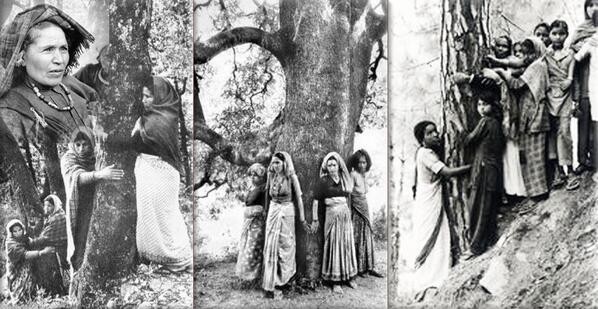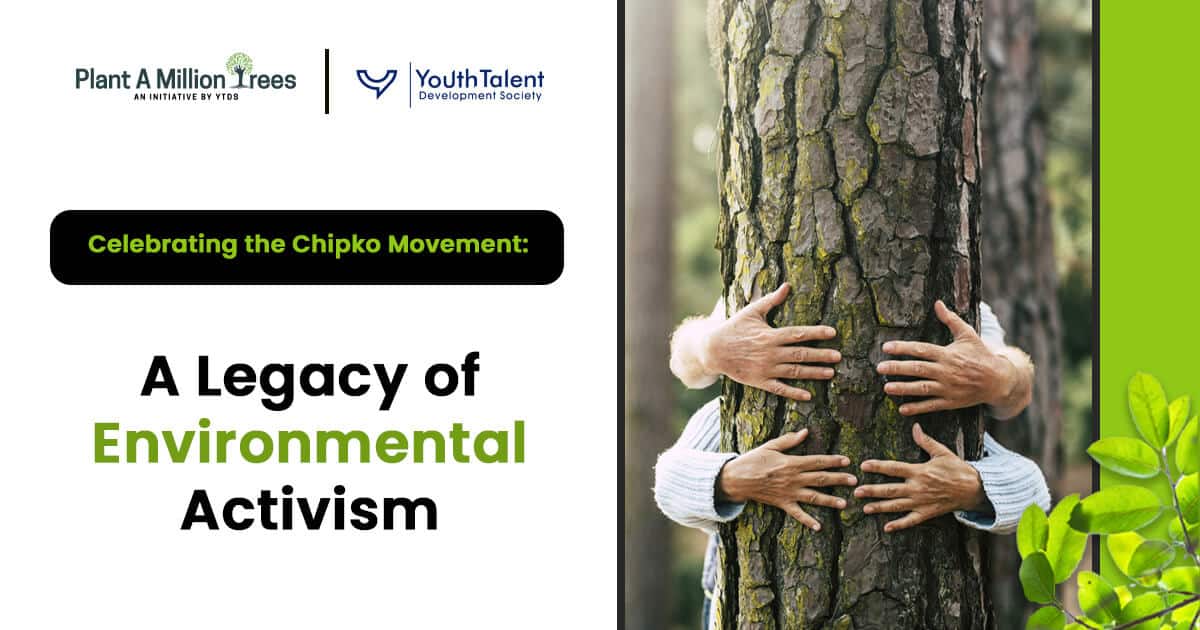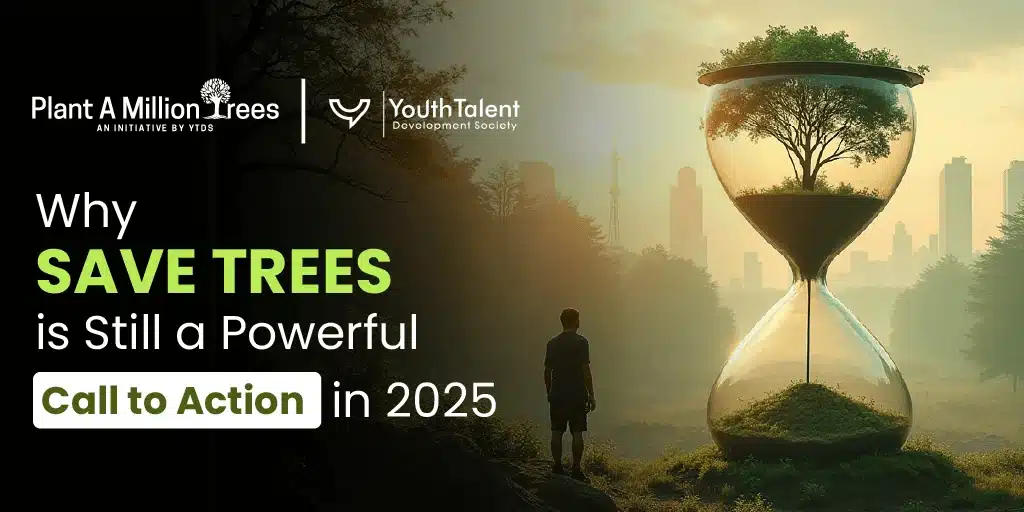In those days, we used to write, Save Trees, on the school notebooks, and we would shout it in...
The Chipko Movement History is the best example of environmental activism, a testimony to the strength and will of the Indian rural poor against forest degradation.
It is the true example of a grassroots movement in the Himalayan region since the 1970s that has well impacted laws on forest protection and has raised consciousness about environmental issues globally.
Origins and Key Events of the Chipko Movement: How It All Began
Chipko Movement, in Hindi meaning “to hug”, appeared in 1973 in Chamoli district in Uttarakhand (then part of Uttar Pradesh) following the government’s decision to allow commercial logging, ignoring the ecological requirements of the local population.
Villagers led by environmentalists Sunderlal Bahuguna, Chandi Prasad Bhatt, and a group of valorous women hugged trees to stop their felling, thus initiating the famous Tree Hugging Protest.
Major Milestones:
- 1973: The protest in Reni Village started where the women, led by Gaura Devi, hugged trees and kept their stand against the loggers to oppose deforestation.
- 1974-1975: The focus now was on expanding resistance – The movement swept from the other villages into the forest, with participation from local communities everywhere.
- 1980: Government bans tree felling-The Indian government banned commercial logging on the Himalayan forests for 15 years after years of protests.
- 1981: Recognition and Worldwide Influence-The movement gained international stature and became a reference point for similar environmental movements around the world.
- 1983-1984: The Appiko Movement drew inspiration-The movement inspired many activists in Karnataka to fight for forest conservation and strengthen the movement further in India.
The movement had impacts beyond India; it helped to shape ecologically-enlightened policies all over the world and established an historical precedent for community-based struggles in environmental preservation.

Women’s Role in Environmental Protection
The Chipko Movement History will bear testimony to the significant involvement of women in it-from being traditionally responsible for collecting firewood work and other household resources, these women have very well understood the fact that forest lands were part and parcel of their livelihood and welfare.
They were led championed by the likes of Gaura Devi. The women would show official authorities and loggers what they could do about Forest Conservation History in a courageous way.
Even as such, they and their leaders were able to save thousands of trees and brought women’s valor to the forefront of environmental protection.
This case has emerged as one of the earliest examples of women creating an impact within the environmental scene. It would greatly favor the increased participation of women in ecological conservation efforts, such as those at the global level. Their efforts still influence the shaping of sustainable policies today.
The Broader Impact on Environmental Movements in India
Realizing the peril faced by the environment from the exploitation of the forests, the Chipko Movement came to the rescue, lending its name and inspiration, and forging plethora of Environmental Movements in India, post the recognition of its accomplishment in empowering the grassroots movements:
- Appiko Movement (1983) – A movement for the protection of forests in Karnataka that followed the principles of Chipko in opposing deforestation in the Western Ghats.
- Silent Valley Movement (1973-1985) – A platform against the proposed hydroelectric project in Silent Valley, Kerala, and cancellation of the project in 1985 to protect the region’s rich biodiversity.
- Narmada Bachao Andolan (1985-present)-An extended struggle against large dams on the Narmada River that later encompasses the rights of displaced communities and preservation of the river ecosystems.
- Save the Western Ghats Movement (1980-1990s)-A grassroots movement focusing on the conservation of the ecologically fragile Western Ghats through programs of sustainable development.
These movements demonstrate the capacity of local action to influence national environmental policy, thereby giving credence to the belief that committed citizens can engender significant ecological protection and legislative changes.

How Did the Chipko Movement Impact Environmental Policy in India?
The Chipko Movement drastically influenced environmental governance in India:
- 1980: Prohibition on felling trees in Himalayan Forests – The government announced a moratorium on tree felling in ecologically sensitive areas.
- FOREST CONSERVATION ACT, 1980 – This act strengthened provisions in law concerning sustainable forest management.
- Environmental Education and Awareness – It highlighted the importance of including environmental education in school curricula.
- Inspired Global Conservation Movement – Chipko tenets were rediscovered as mantras in many other movements worldwide that insisted on local involvement in conservation efforts.
- Eco-Development Initiatives – Sustainable afforestation programs and community-based conservation activities were encouraged.
Inspiring Environmental Stories: Lessons from the Chipko Movement
What Can We Learn from the Chipko Movement Today?
The Chipko Movement is one strong example of grassroots activism that has much to teach present-day environmental issues:
- Community Participation is Important– Conservation starts from the community.
- Women are Environmental Leaders– Women must be recognized and empowered in environmental movements; otherwise, the change will not be sustainable.
- Sustainable Development Must be Prioritized-Economic growth should not result in the destruction of the ecosystem.
- Government and Policy Advocacy– Citizens should voice for strong environmental regulations to protect natural resources.
How Can We Continue the Legacy?
- Endorse afforestation projects as well as reforestation schemes.
- Push for eco-referral schemes at the local, state, or national levels.
- Educate future generations about the importance of ecological conservation.
- Reduce deforestation through conscious consumer choices and responsible land management.
Conclusion
All of this happened a long time ago, but the Chipko Movement History would still inspire younger generations-it would be a call for action. The courage of local communities and the leadership of activists like Sunderlal Bahuguna underscore the power of collective effort in protecting the environment. By embracing Chipko, we can contribute to an even greener and more sustainable world.
It is an eternal reminder that even a handful of determined people can cause tremendous change in the environment. Its legacy continues to inspire global conservation initiatives, inviting all to become active stewards of nature.
In celebrating and commemorating this historic episode, we reconfirm our commitment to protect the environment and sustain life.


